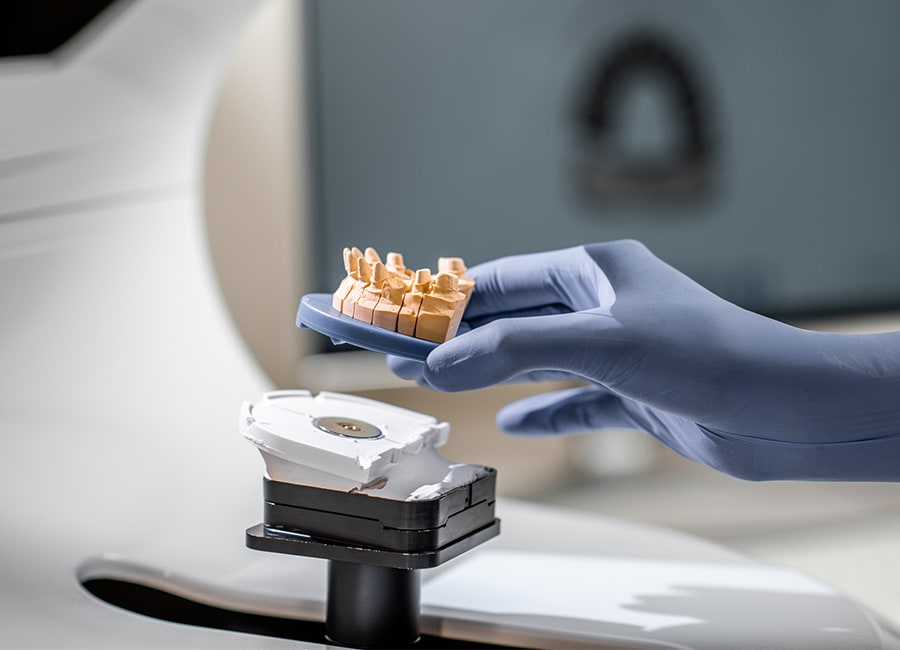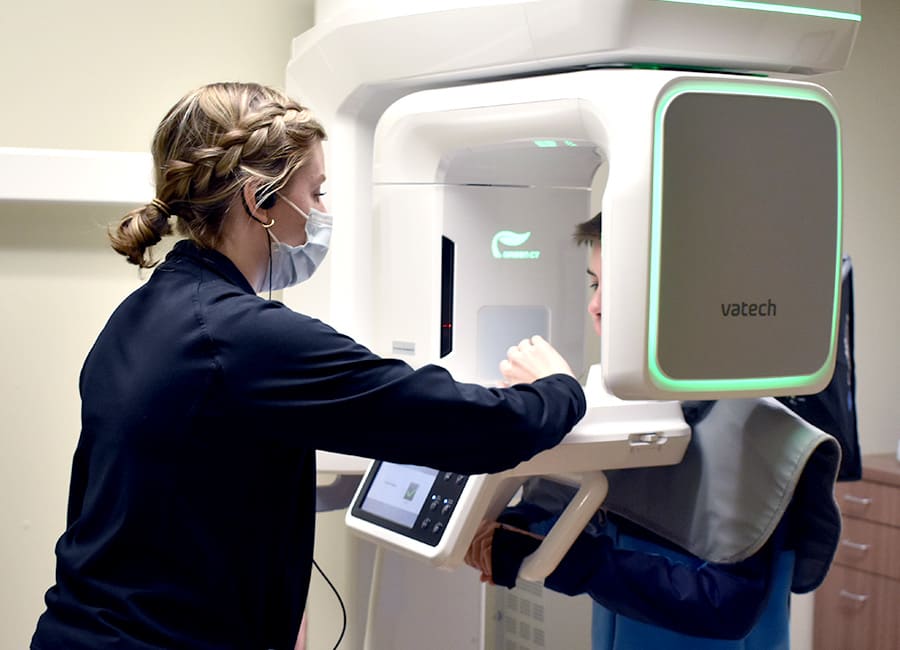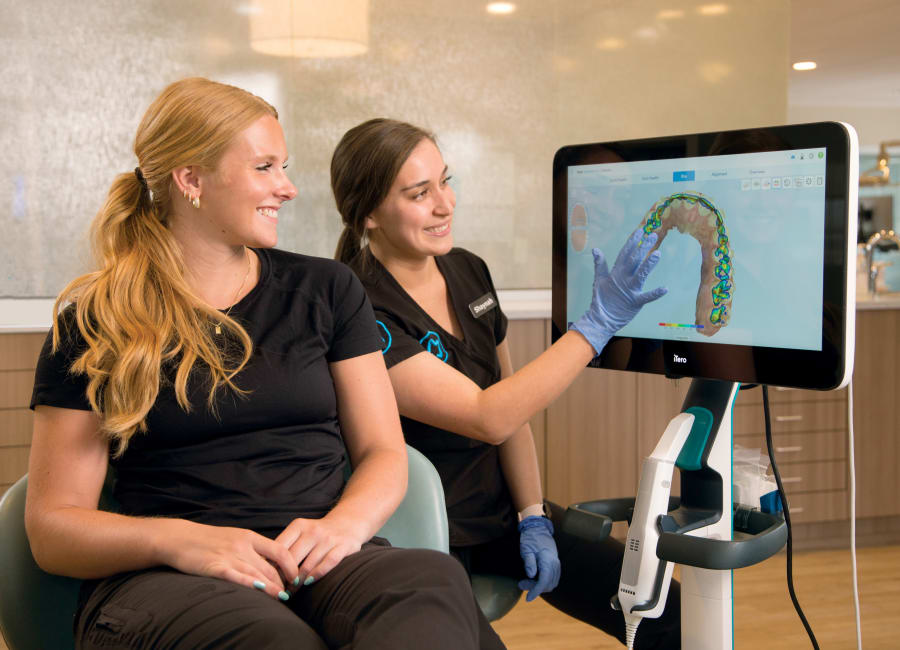The Role of Technology in Orthodontics
At Munk Orthodontics, dental technology plays a key role in just about everything we do.
The technology in our clinics helps us understand the nature of your orthodontic issue in detail. It allows us to make an accurate and specific diagnosis, which in turn means highly customized treatment planning to meet your needs and goals in the safest and most efficient way possible.
Our technology also guides us in developing these treatment plans and adjusting them along the way to ensure optimal results as quickly as possible.
During each step of your orthodontic journey, you'll encounter our technology as we use it to communicate with you about your condition, the treatment plan, and how it's all going.

3D Printing
3D printing has become a key innovation in orthodontics, especially for creating customized aligners in-house. By using digital scans of a patient’s teeth, orthodontists generate accurate 3D models that can be adjusted for optimal alignment. These models are then printed using biocompatible materials, resulting in personalized aligners that are both cost-effective and time-efficient. This approach allows for quick modifications as treatment progresses, offering a high degree of flexibility tailored to each patient’s needs.
Beyond aligners, orthodontists also use 3D printing to produce retainers, space maintainers, and other dental appliances with precise fits. The use of digital technology ensures high accuracy, improving treatment outcomes and patient comfort. The speed of 3D printing also enables faster turnaround times for adjustments or replacements, enhancing overall efficiency and satisfaction in orthodontic care.


Panoramic X-rays
Panoramic X-ray technology allows orthodontists to capture single two-dimensional images that show all of your mouth's oral structures. Each panoramic image includes the teeth, the upper and lower jaws, and the surrounding structures and tissues.
This technology is crucial for assessing the presence or absence of specific teeth and their roots, their form and structure, their eruption sequence, and their relationship to one another in the jaws. Panoramic X-rays provide your orthodontist with key insights throughout the assessment and treatment planning stages.
iTero™ Intraoral Scanner
The iTero intraoral scanner is a handheld imaging device that creates highly detailed, three-dimensional digital impressions of the hard and soft tissues of the mouth. The process is fast and easy; you simply open wide, and your orthodontist will move the device around your mouth, capturing images. It only takes a few minutes to complete.
At Munk Orthodontics, we combine iTero digital impressions with 3D printing to help improve orthodontic care by offering greater accuracy, efficiency, and patient comfort. By doing this, we can customized treatments, better visualize results, and support modern, innovative dental practices. This integration enhances the overall patient experience, making treatments faster, more precise, and more personalized.

 Provider
Provider